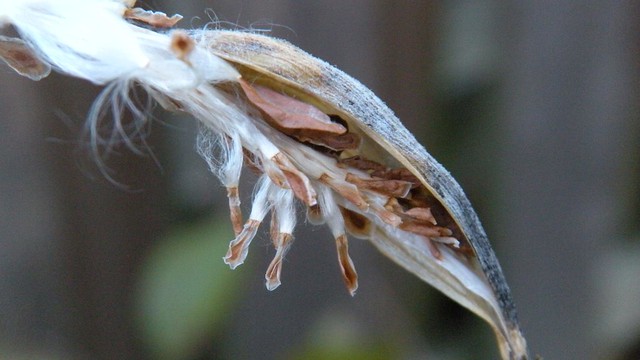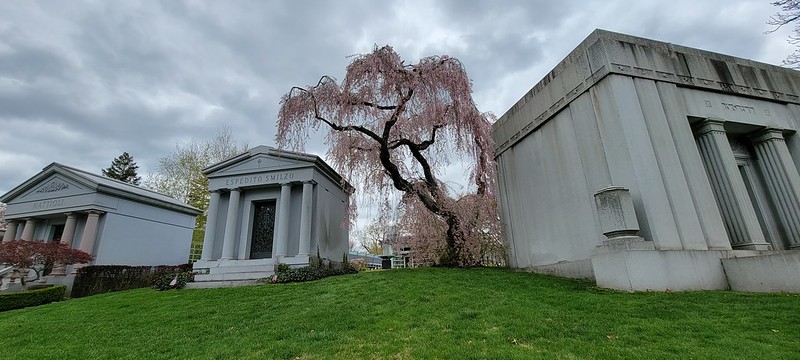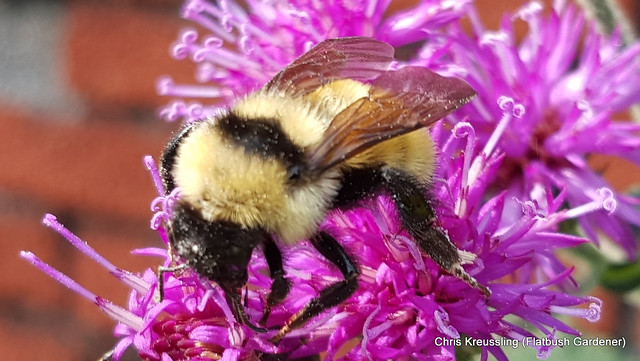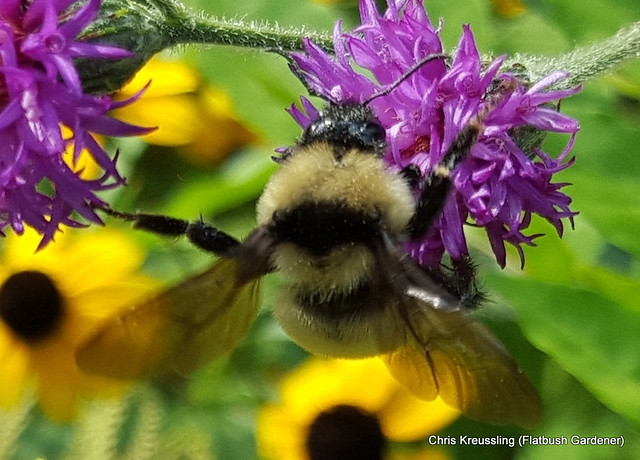Updates:
2013-10-05:
Guest post on Garden Rant.
2013-09-26: Thanks to the Brokelyn link, the petition surges past 2,500, adding 800 new signatures in two days, nearly all of them from Brooklyn.
2013-09-24: Brokelyn favorably summarizes the issue and links to the petition.
2013-09-22: The NY Times mentions
the petition, but doesn't link to it. It briefly quotes me and links to this blog. The article is a puff piece largely written by BBG.
The petition has reached 1,750 signatures, and continues to grow.
2013-09-19: Brooklyn Daily Eagle and NY Daily News have picked up the petition.
We reached the 1,500 signature mark earlier today.
2013-09-16: Added selections of
some of my favorite comments from signatories to the petition.
Contents
Seeds,
Asclepias incarnata, Swamp Milkweed, NYC-local ecotype, growing in my urban backyard native plant garden and wildlife habitat in November 2010. Monitoring and propagation of rare and endangered native plants from local, wild populations is one of the activities Brooklyn Botanic has eliminated with its latest round of cuts.
 Three weeks ago, I wrote
Three weeks ago, I wrote about the elimination of the last science staff, programs and activities at the Brooklyn Botanic Garden (BBG). Since then, I've learned much more about the history of just how far BBG has drifted from its
mission, which is supposed to include:
Engaging in research in plant sciences to expand human knowledge of plants, and disseminating the results to science professionals and the general public.
Several of us have continued working to formulate a response. Over the weekend, we launched a petition on
Change.org to
Restore Science to the Brooklyn Botanic Garden:
Reinstate Brooklyn Botanic Garden’s field work, herbarium and library access, and the scientists needed to support these programs and services.
Restore science as a priority, as required by the Brooklyn Botanic Garden’s mission: “Engaging in research in plant sciences to expand human knowledge of plants, and disseminating the results to science professionals and the general public.”
Include Brooklyn, its neighborhoods, and scientific communities – the public for which Brooklyn Botanic Garden was founded, and is funded, to serve – in all decisions affecting its research and education programs and activities.
In less than 24 hours, we reached the 100-signature mark. Even this early, after seeing the responses in one day, there's hope we may see thousands of signatures in this campaign.














